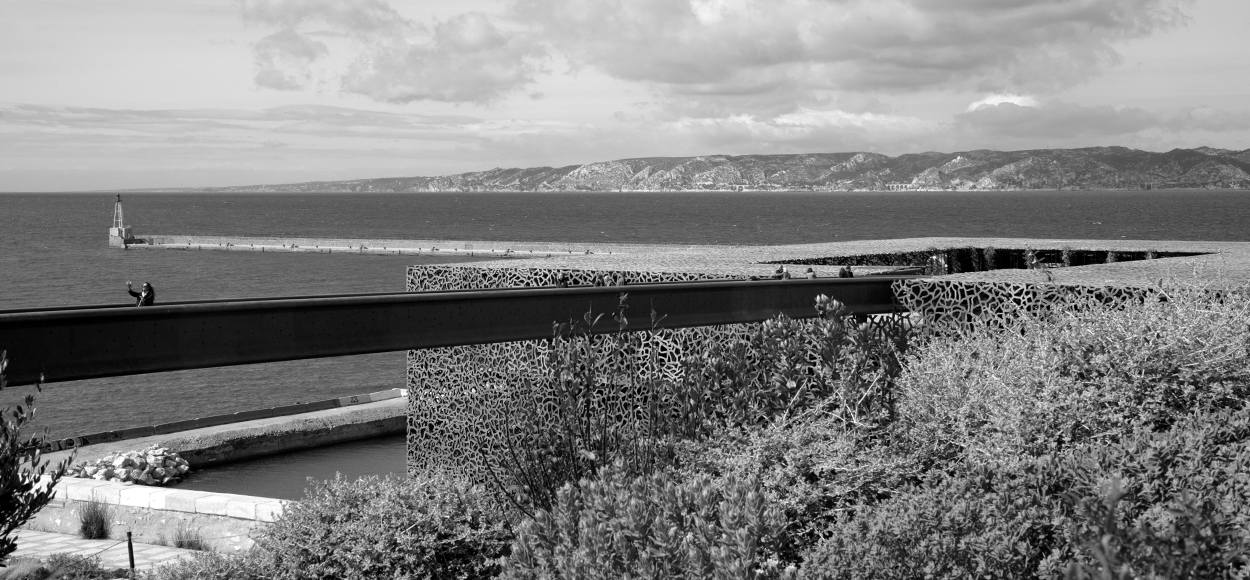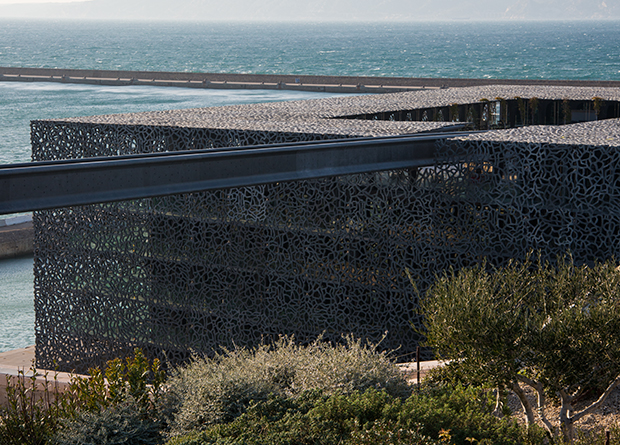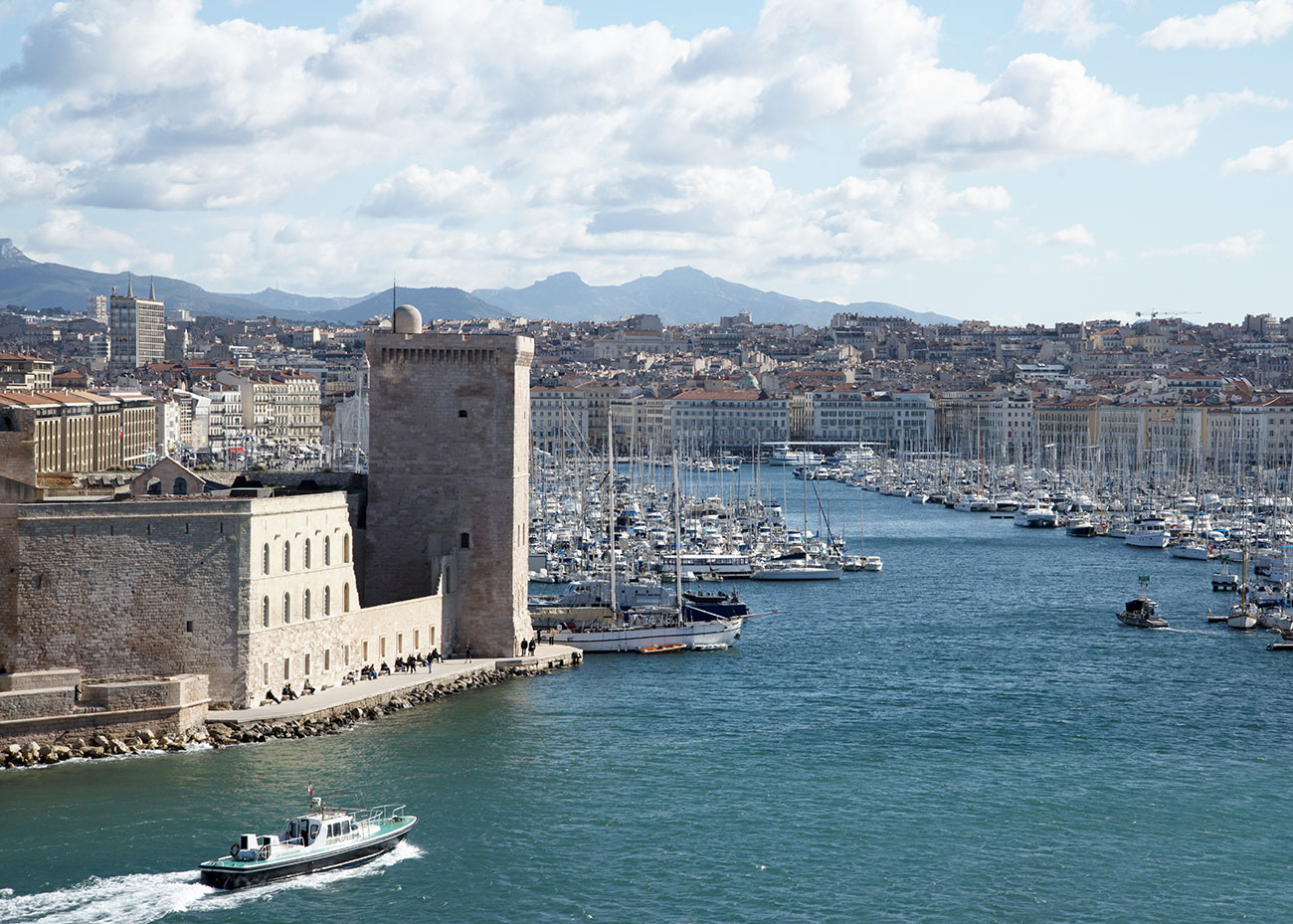
Mucem
The Mucem
A museum for the Mediterranean
In Marseille, the Mucem stands out as a great museum dedicated to the Mediterranean.
What makes the Mucem so unique is that it recounts, analyses and sheds light on the ancient foundations of this cradle of civilization and the tensions running through it since that time, all in the same place and with the same passion. Also that it is a platform for discussions about Mediterranean issues.
Both its exhibitions and its cultural programmes offer a multidisciplinary vision that combines anthropology, history, archaeology, art history and contemporary art to show the public the multiple facets of the Mediterranean world and its ongoing dialogue with Europe.
Its roots
As the first museum devoted to Mediterranean cultures, the Mucem is a completely novel structure. The product of the metamorphosis of a major societal museum – the Museum of Popular Arts and Traditions, created in Paris in 1937 –, it represents the first real conversion of a museum from national to regional. The Mucem Museum of the Civilizations of Europe and the Mediterranean opened in Marseille in June 2013. By the following year, it had joined the ranks of the 50 most visited museums in the world.
One museum, three sites
The Mucem encompasses three sites. Along the sea, at the entrance to the Old Port, the J4 building (Rudy Ricciotti’s and Roland Carta’s symbolic architectural creation) and the Fort Saint-Jean, a fully restored historical monument, are the perfect embodiment, with their two footbridges, of the idea of building a connection between both shores of the Mediterranean. They host major exhibitions and artistic and cultural programming events. In town, in the Belle de Mai district, the CCR Centre for Conservation and Resources houses the museum’s collections. This unique grouping allows the MuCEM to offer a multitude of cultural activities.
- The J4
-
16,500 m2 including 3,690 m2 of exhibition space
‘A symbol of the new face of Marseille’Since it opened in June 2013, the building designed by Rudy Ricciotti (in association with Roland Carta) has become a symbol of the new face of Marseille. This concrete cube – forming a perfect square measuring 72 metres on each side – is clad in a lacy screen made out of concrete, giving it a strong visual identity that helps to elevate the Mucem to the rank of an internationally recognisable ‘world-object’.
Surrounded by harbour basins, positioned facing the sea, the J4 offers 360° views taking in the Fort Saint Jean and the Mediterranean, which are visible from the glazed exhibition spaces, the roof terrace and the outdoor ramps that encircle the building. It is linked to the Fort Saint Jean by a high footbridge 135 metres long.
The J4 is the veritable ‘heart’ of the MuCEM, hosting large permanent and temporary exhibitions, as well as regular and one-off events from the artistic and cultural programme.

- Fort Saint-Jean
-
15,000 m2 dont 1,100 m2 of exhibition space and 12,000 m2 of gardens
‘A fully restored historic monument, open to all’Although the Fort Saint Jean’s origins date back to the 12th century, this former military fort, totally off-limits to the public, resembled an impregnable fortress. Its opening in 2013 was thus a historic first: the fully restored fort has since been open free of charge to the people of Marseille, who were quick to adopt the site as a new public space. Although some of the buildings are used for exhibitions, the Fort Saint Jean is above all a vibrant new centre centre in the heart of Marseille, offering a large range of activities, including a historical trail, a botanical stroll through the Jardin des Migrations and a chance to discover spectacular, previously inaccessible views

- The CCR
-
13,000 m2 dont 7,000 m2 of storerooms
«Conservation et valorisation des collections: cette double responsabilité est le fondement de l’activité du CCR»This large ochre-coloured monolith designed by architect Corinne Vezzoni (in association with André Jolivet) houses the treasure that is the Mucem’s collections, consisting of more than one million objects. It is here that the collections are conserved, studied and restored, but also, more unusually, where they are made accessible to others. This twofold responsibility forms the basis of the CCR’s activities. Museum professionals, researchers, students, art lovers and those who are simply curious can thus access the entire collections, which can be viewed on-site. A storeroom specially designed to receive visitors and an exhibition room give members of the general public a chance to go ‘backstage’ at the Mucem.
A cultural centre
The Mucem is interested in the contemporary aspects of European and Mediterranean civilizations. Its collections include more than 350,000 objects, as well as a large assortment of documents, comprising a total of a million works of art, documents and objects, an extraordinary treasure trove that is promoted by means of an ambitious programme of permanent and temporary exhibitions.
The 21st century museum aims to be a real cultural centre covering a vast swath of history, making use of all the disciplines of the humanities and social sciences and displaying artistic expressions from both shores of the Mediterranean.
A Mediterranean crossroads
The museum’s goal is to promote Mediterranean heritage, take part in the creation of new exchanges in the region and, during this period of profound upheaval, help to lay the foundations for the Mediterranean world of tomorrow. In Marseille, the Mucem is a place where, on both a national and an international scale, people can come to gain a better understanding of the Mediterranean.